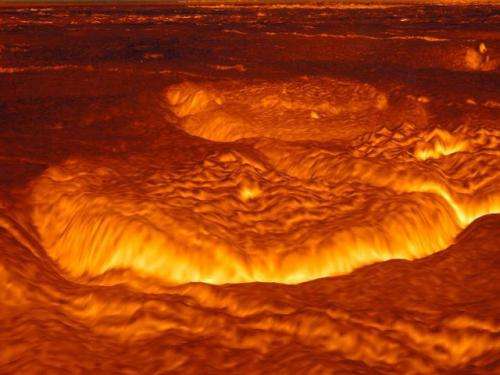In the Zone. Seeking the Twin of our Twin in The Venus Zone.

What if, in our quest to find another Earth, we happen upon another Venus?
We should celebrate, of course. Venus is often called Earth's "twin" because it shares of lot of our home planet's physical characteristics: surface area, composition and density. Also, roughly speaking, both planets inhabit the area around the Sun's habitable zone - though Venus is near the inner edge, while we on Earth occupy the relative center.
Bearing the similarities and differences in mind, scientists Ravi Kumar Kopparapu, Stephen Kane and Shawn Domagal-Goldman explored how distant analogs to Venus might be detected and differentiated from Earth-like planets occupying the same relative space. The paper pinpointing their finding was published in Astrophysical Journal Letters on 9/10/2014.
The successful detection of doppelgängers of our inner planets, as Kopparapu and colleagues describe, means that at least two important events have taken place. First, while our ability to identify the existence of other planetary systems is increasing by the day, when it comes to divining which exoplanet is a mini-Neptune and which is a mega-Earth, we still have a ways to go. Gaining the ability to pick out Venus-like planets will imply that we have gotten really good at sorting the exoplanet we discover. Then, there's the larger issue: If Venus-like planets are found in abundance, then Solar Systems like ours may be the rule rather than the exception. Discovering a twin to Venus around another star might well spark our interest in focusing our observations there, both for signs of another Earth and for clues about the dynamics of exoplanetary systems that harbor conditions similar to our own.
In their paper, Kopparapu, Domagal-Goldman and Kane explain how we can determine the distance between a planet and a star from calculations we can make today. They project that in the near future, when the James Webb Space Telescope takes to the skies, measurements of exoplanetary atmospheres will distinguish Venus-like from Earth-like from Mars-like. In the meantime, Kane and colleagues made some important calculations that will assist astronomers in the search for distant planets in the "Venus Zone".

"The inner edge of the 'Venus zone' is the distance at which Venus would lose it's atmosphere from all high energy input from the Sun," said Domagal-Goldman, "The outer edge, by the way we've defined it here, the same as the inner edge of the habitable zone."
According to Domagal-Goldman, the Venus Zone's inner edge would extremely close to the Sun: about twice as close to the Sun as Mercury. On the other side of the zone - the outer edge - is the critical border for habitability. Inside the border, the planet should be more like Venus - beyond the border, a planet is more likely to be Earth-like.
For the public at large, as well as the astronomy community, models such as the Venus zone are useful. The catalog of exoplanets and likely exoplanets stretches into the thousands. What most of us would like to understand about these distant worlds is what the environment is like at or near their surfaces. Describing a planet as being in a "habitable zone" allows us to think about liquid water on the surface. Now, a "Venus zone" gives us something to hang our imaginative and theoretical hats on. A Venus-zone exoplanet is one where the Solar Wind should leave some atmosphere behind - perhaps enough to sustain a runaway greenhouse effect. It begs an obvious question, however: Is there a Mars Zone?
"There could be a Mars-zone, as well!" said Domagal-Goldman, "But getting at that will require us to understand the degree to which Mars was habitable, for how long, and what caused the demise of the red planet's habitability. These are all questions currently being explored by Curiosity, and we look forward to answers on all those topics."
More information:
Related article: phys.org/news/2014-09-astronom … enus-zone-stars.html
Source: Astrobio.net
This story is republished courtesy of NASA's Astrobiology Magazine. Explore the Earth and beyond at www.astrobio.net .